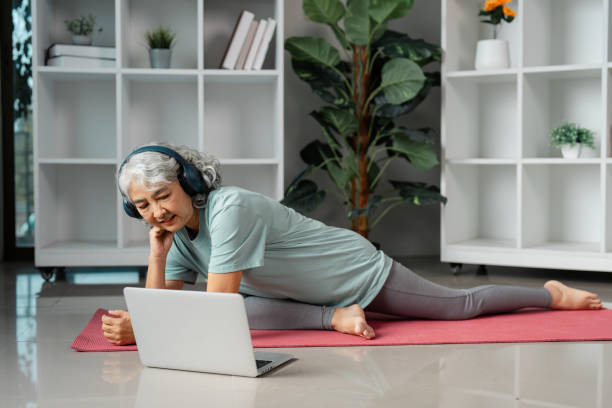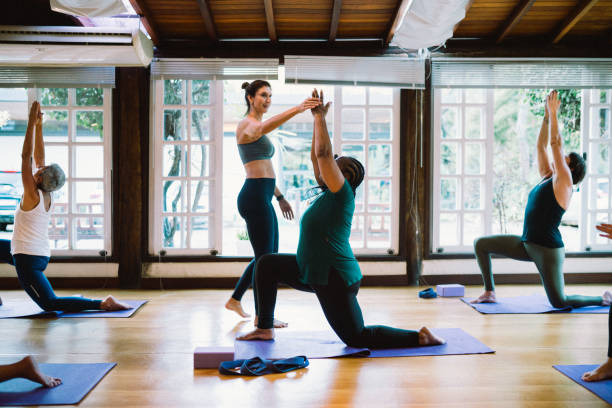Maintaining balance and stability becomes increasingly challenging as we age. Reduced muscle strength, slower reflexes, and potential medical conditions can lead to a higher risk of falls and injuries in seniors.
However, with the right therapeutic techniques, seniors can significantly improve their balance and stability, leading to greater confidence and a higher quality of life. This article explores evidence-based methods and practices designed to enhance physical stability for older adults.
Contents
The Importance of Balance and Stability in Aging
Balance is a critical component of mobility and independence. Poor balance not only increases the likelihood of falls but can also limit participation in daily activities and social engagements. According to the Centers for Disease Control and Prevention (CDC), falls are the leading cause of injury-related deaths among people aged 65 and older.
Improving balance and stability can lead to:
- Reduced risk of falls: Regularly practicing stability-enhancing exercises decreases the likelihood of accidents.
- Increased confidence: Seniors who feel stable on their feet are more likely to engage in physical and social activities.
- Improved overall health: Many balance-improving activities also enhance cardiovascular health, strength, and flexibility.
Therapeutic Techniques for Enhancing Balance

1. Strength Training
Weak muscles, especially in the legs and core, can hinder stability. Strength training exercises are essential for building muscle mass and improving joint support. Common strength-building exercises include:
- Chair Squats: Using a chair for support, seniors can perform squats to strengthen their leg muscles.
- Leg Lifts: Raising one leg at a time while holding onto a sturdy surface helps improve balance and strength.
- Resistance Band Exercises: Lightweight resistance bands offer an excellent way to strengthen muscles without overexertion.
2. Tai Chi
Tai Chi, an ancient Chinese practice, is often called “meditation in motion.” It focuses on slow, deliberate movements and controlled breathing, which enhances balance, flexibility, and mindfulness. Studies have shown that seniors who practice Tai Chi experience fewer falls and report increased physical stability.
3. Yoga
Yoga combines stretching, strength training, and balance exercises into one holistic practice. Many yoga poses, such as the Tree Pose or Warrior Pose, target specific muscle groups that aid in stability. Chair yoga is an excellent option for seniors with mobility limitations, offering modified poses that ensure safety.
4. Vestibular Rehabilitation Therapy (VRT)
VRT is a specialized form of physical therapy aimed at treating balance disorders stemming from inner ear issues. A trained therapist guides seniors through exercises that recalibrate the body’s balance system, improving coordination and reducing dizziness.
5. Proprioception Training
Proprioception refers to the body’s ability to sense its position in space. As we age, this sense can diminish, affecting balance. Exercises like standing on one leg or walking heel-to-toe can help seniors regain proprioceptive awareness. Tools like balance boards or foam pads add an extra challenge to these exercises, further enhancing stability.
6. Aquatic Therapy
Exercising in water reduces the strain on joints while providing resistance for building strength. Activities like water walking or aqua aerobics improve coordination and balance without the risk of falls.
7. Gait Training
Gait training focuses on improving walking patterns and posture. Physical therapists often incorporate this technique for seniors with mobility issues or those recovering from injuries. Tools like parallel bars, treadmills, and step trainers can be used to guide the process.
Tips for Implementing Therapeutic Techniques
- Start Slowly: Begin with simple exercises and gradually increase intensity. Overexertion can lead to injuries or discouragement.
- Seek Professional Guidance: A physical therapist or certified trainer can design a personalized program tailored to individual needs and limitations.
- Use Supportive Equipment: Stability aids like walkers, canes, or grab bars provide additional safety when performing exercises.
- Be Consistent: Regular practice is key to seeing improvements. Aim for 20–30 minutes of balance exercises three to four times a week.
- Monitor Progress: Keep track of improvements to stay motivated and identify areas needing further focus.
Preventing Falls with Home Modifications
In addition to therapeutic techniques, making small changes at home can significantly reduce fall risks. Consider the following:
- Declutter Walkways: Remove tripping hazards like loose rugs, cords, and unnecessary furniture.
- Install Grab Bars: Place grab bars in bathrooms and near stairs for additional support.
- Improve Lighting: Ensure all areas of the home are well-lit, especially hallways and staircases.
- Choose Non-Slip Surfaces: Use non-slip mats in areas prone to moisture, such as bathrooms and kitchens.
The Role of Nutrition in Balance and Stability
Proper nutrition supports muscle strength and bone health, both essential for stability. Seniors should focus on a diet rich in:
- Calcium and Vitamin D: Found in dairy products, leafy greens, and fortified foods, these nutrients promote strong bones.
- Protein: Lean meats, beans, and nuts help maintain muscle mass.
- Hydration: Staying hydrated prevents dizziness and fatigue, which can impair balance.
Final Thoughts
Improving balance and stability is a holistic process that combines physical exercise, therapeutic interventions, and lifestyle adjustments. Seniors who actively work on these aspects not only reduce their risk of falls but also regain confidence and independence.
By incorporating these therapeutic techniques into daily routines, seniors can enjoy a healthier, more active lifestyle while minimizing the dangers associated with aging. Families and caregivers play a crucial role in encouraging and supporting these efforts, ensuring that their loved ones age gracefully and safely.
